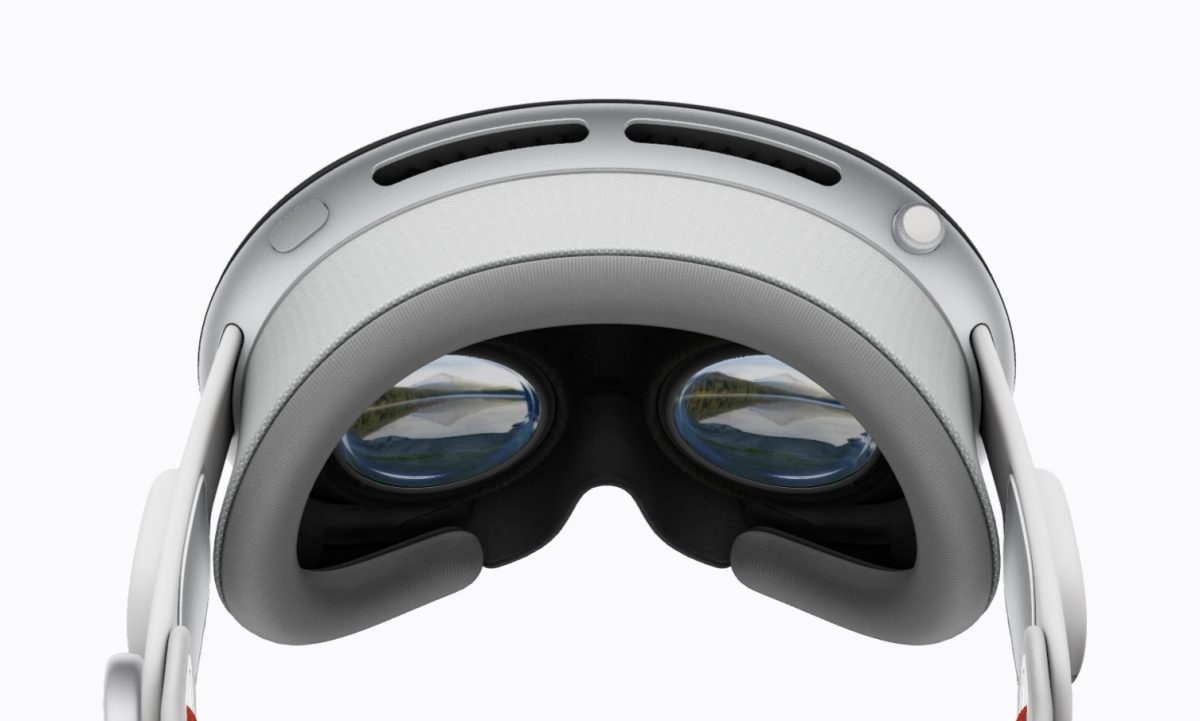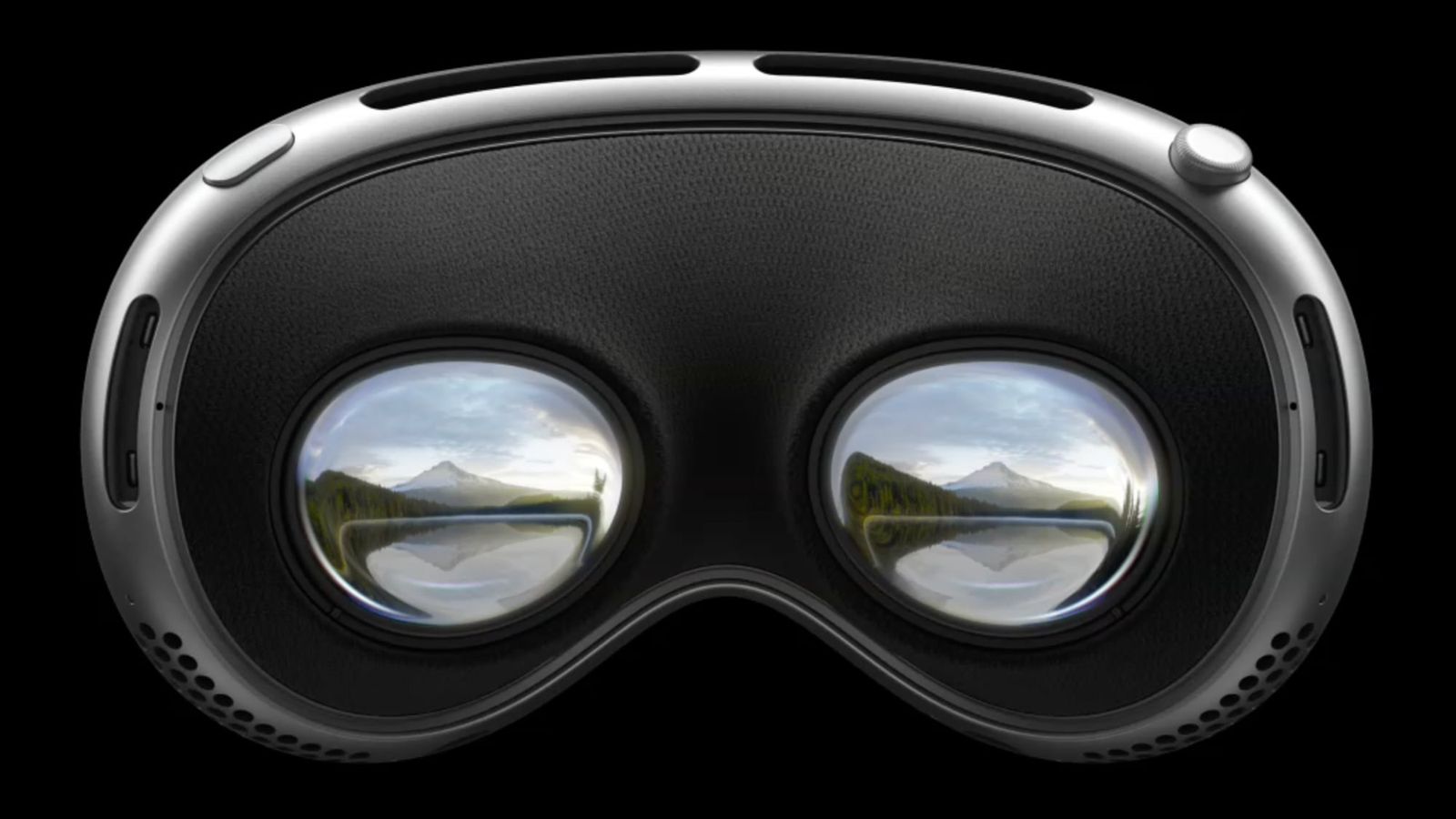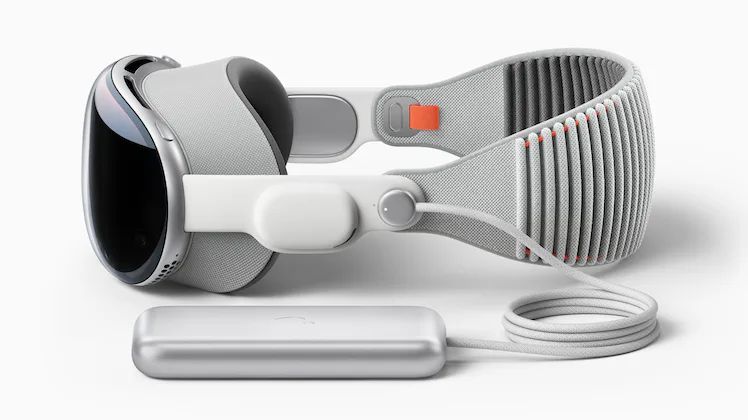Highlights
- Vision Pro 2 to feature advanced Samsung-made RGB OLEDoS display by 2027.
- Significant upgrade from first-gen model’s WOLED technology.
- Improved efficiency and brightness with direct emission RGB sub-pixels.
- Apple exploring affordable variant of Vision Pro amidst price concerns.
Apple’s Vision Pro headset has not even hit the shelves and the rumour mill is already churning out leaks about the next iteration of the device.
As per reports, Apple plans to introduce the Vision Pro 2, equipped with an advanced RGB OLEDoS (Organic Light Emitting Diode on Silicon) display made by Samsung, reportedly by 2027.
This move marks a substantial upgrade from the first-generation model’s WOLED (White Organic Light Emitting Diode) with a colour filter.
Understanding the Vision Pro 2

The RGB OLEDoS technology can produce light and colour directly from red, green, and blue sub-pixels on a single layer.
This design eliminates the need for a separate colour filter, a feature prevalent in the WOLED and colour filter OLEDoS displays.
The direct emission of light from RGB sub-pixels contributes to a significantly brighter display compared to its predecessors.
In addition to enhanced brightness, the RGB OLEDoS displays promise improved efficiency.
The absence of a colour filter, which is required in WOLED displays to convert white light into RGB colours, is a big contributing factor to this efficiency.
Currently, the Vision Pro supports up to 2 hours of battery with the included battery pack.
The reported increased efficiency could be a pivotal factor in enhancing the overall battery life of the Vision Pro 2.
Samsung To Become A Key Supplier for Vision Pro 2

A key development in this upgrade is Apple’s reported decision to switch display suppliers.
Samsung is expected to replace Sony as the provider of the spatial computer’s display.
Sony’s limited production capabilities and a yield rate below 50% for the display used in the first-generation Vision Pro has not made Apple happy.
Samsung’s expertise in display technology, particularly in OLED, makes them a suitable candidate for this significant task.
However, all this change is supply chain is bound to shoot up the Vision Pro’s price even more than its current $3,499.

To address this, Apple is reportedly exploring the development of a more affordable variant of the Vision Pro.
This version would likely see the removal of some features to reduce costs, aiming to make the spatial computer more accessible.
Although there have been rumours of a lower-priced mixed reality headset release by 2025, the current status of this project remains uncertain.
FAQs
What is the major upgrade in Apple’s Vision Pro 2 compared to its predecessor?
The Vision Pro 2 is set to feature a state-of-the-art RGB OLEDoS display manufactured by Samsung, offering a substantial improvement over the first-generation model’s WOLED technology. This upgrade promises enhanced brightness and efficiency.
How does RGB OLEDoS technology enhance the Vision Pro 2’s display?
RGB OLEDoS technology in the Vision Pro 2 allows for direct light and colour production from red, green, and blue sub-pixels, eliminating the need for a separate color filter. This results in a brighter and more efficient display.
Why is Apple switching its display supplier to Samsung for the Vision Pro 2?
Apple has chosen Samsung as the display supplier for the Vision Pro 2 due to Sony’s limited production capabilities and low yield rate for the first-gen model.
Samsung’s expertise in OLED technology positions them as a fitting supplier for the advanced display.
What are the implications of the new display technology on the Vision Pro 2’s battery life?
The increased efficiency of the RGB OLEDoS display, without the need for a colour filter, is expected to enhance the battery life of the Vision Pro 2, potentially exceeding the current model’s 2-hour limit.
What is the predicted release date for Apple’s Vision Pro mixed-reality headset?
As per analyst Ming-Chi Kuo, the Apple Vision Pro mixed-reality headset is expected to hit Apple Stores by the end of January.
This prediction is based on current production schedules and Apple’s pre-launch activities.
What are some key features of the Apple Vision Pro?
The Apple Vision Pro boasts a glass front and an aluminum body for comfort, an adjustable strap, two processors (Apple M2 and Apple R1), over 4K resolution per eye, advanced eye and hand tracking systems, and an immersive spatial audio experience.
How is Apple preparing for the launch of Vision Pro?
In anticipation of the Vision Pro’s release, Apple is engaging with developers for app readiness and training Apple Store employees to effectively showcase and demonstrate the headset to potential customers.
How does the production volume of Vision Pro compare to other Apple products?
Apple plans to produce a relatively modest number of Vision Pro units, with estimates ranging between 130,000 to 150,000 for 2024.
This figure is significantly lower than the production volumes for other Apple products like the iPhone.
Has there been an official announcement from Apple about the Vision Pro’s release?
As of now, there has been no official announcement from Apple regarding the release date of the Vision Pro. The current information is based on predictions by analysts and insider reports.
What is the Apple Vision Pro, and when is it launching?
The Apple Vision Pro is Apple’s latest foray into virtual reality headsets, combining advanced technologies for an immersive experience.
Reports, including from Bloomberg’s Mark Gurman, indicate a potential launch in February, with Apple preparing its staff in Cupertino for the upcoming release.
How does the Apple Vision Pro integrate with other Apple products?
The headset is designed to work seamlessly with recent software updates, like iOS 17.2, allowing iPhone 15 Pro users to capture and view 3D-encoded spatial videos on the Vision Pro.
This integration exemplifies Apple’s strategy of unifying its hardware and software ecosystems.
What makes the Apple Vision Pro unique in the market?
The Vision Pro stands out with its personalized fitting process, requiring in-store appointments and an app-assisted head scan for custom recommendations.
It features a glass front, aluminum body, and advanced processors (Apple M2 and R1) for superior graphics and sensor data processing, making it a pioneering product in the VR domain.
What are the expected capabilities of the Apple Vision Pro?
The headset boasts micro-OLED displays offering over 4K resolution per eye, precise eye tracking using LEDs and infrared cameras, hand tracking for intuitive interactions, and a spatial audio system for an all-encompassing virtual reality experience.
Also Read: Apple’s 2024 Product Launch Predictions: Apple Watch 10, AirPods 4, Vision Pro, and More
Also Read: Apple Vision Pro Headset To Reportedly Go on Sale in February 2024
Also Read: Apple Vision Pro Poised for End-of-January Release: Ming-Chi Kuo
